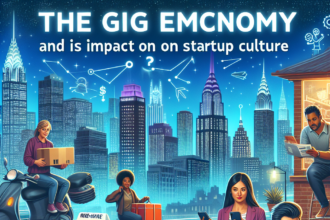In recent years, the technology sector has undergone profound transformation, with collaborations between major industry players reshaping the landscape. Gone are the days when competition ruled the scene; today, partnerships are increasingly the norm, fueled by shared goals, complementary capabilities, and a desire to foster innovation. From cloud computing to artificial intelligence (AI) and sustainable practices, several high-profile collaborations have emerged, demonstrating how tech titans are coming together to drive progress and redefine their industries.
1. Microsoft and OpenAI: Revolutionizing AI Development
One of the most striking collaborations in the technology sector is between Microsoft and OpenAI. In 2019, Microsoft invested $1 billion in OpenAI, a company committed to advancing artificial intelligence in a way that benefits humanity. This partnership is geared toward accelerating AI research and integrating cutting-edge AI tools with Microsoft’s Azure cloud platform.
The collaboration has brought innovations like the OpenAI API, which allows developers to build applications that can harness the power of GPT-3, one of the most advanced language models available. With this partnership, Microsoft has solidified its position as a leader in the AI domain, while OpenAI has gained access to resources that allow for larger-scale research and deployments.
2. Apple and Google: A Unified Approach to Public Health
In a surprising move, two of the fiercest competitors in the tech world—Apple and Google—joined forces to address the global COVID-19 pandemic. The companies announced a partnership in 2020 to develop contact tracing technology that could help public health authorities track and curb the spread of the virus.
Their collaboration focused on utilizing Bluetooth technology to facilitate secure and privacy-preserving automated contact tracing. By combining their expertise and resources, Apple and Google not only accelerated the development of a vital public health tool, but they also set a precedent for how competitors can unite for the greater good.
3. IBM and Salesforce: AI-Powered Business Solutions
IBM and Salesforce have also teamed up to enhance customer engagement through artificial intelligence. In a partnership that leverages IBM’s Watson AI capabilities and Salesforce’s Customer 360 platform, businesses can now access a suite of tools that elevate customer interactions.
By integrating Watson’s AI-driven insights into Salesforce’s platform, companies can gain a deeper understanding of customer preferences and behaviors, leading to personalized experiences. This alliance not only improves business outcomes but also highlights the importance of collaboration in creating advanced solutions for modern enterprises.
4. Amazon and Berkshire Hathaway: Rethinking Healthcare
In 2018, Amazon, Berkshire Hathaway, and JPMorgan Chase announced a partnership aimed at tackling rising healthcare costs in the United States. This coalition combines the strengths of three titans from different industries to focus on improving the healthcare system for their employees and eventually the broader population.
While the precise details of the initiative remain largely under wraps, the potential impact of this collaboration is significant. By pooling their resources and expertise, these companies hope to innovate and drive down healthcare expenses, leading to enhanced access, transparency, and quality of care.
5. NVIDIA and Mercedes-Benz: Accelerating Automotive Innovation
NVIDIA, a leader in graphics processing units and AI technology, has teamed up with Mercedes-Benz to develop next-generation autonomous driving technology. Utilizing NVIDIA’s computing power and AI capabilities, the partnership aims to create a wholly integrated digital architecture for Mercedes-Benz vehicles.
This collaboration is pivotal in the ongoing race toward full autonomy in the automotive industry. With NVIDIA’s expertise in AI and machine learning and Mercedes-Benz’s pedigree in automotive engineering, the partnership stands to transform both the driving experience and overall road safety.
Conclusion
The synergy achieved through these collaborations exemplifies how tech titans are reshaping their industries. By leveraging each other’s strengths, they are not only driving technological innovation but also addressing pressing global challenges. As these partnerships continue to evolve and expand, we can expect to see even more breakthroughs that will shape the future of technology and its impact on our lives.
FAQs
Q1: What are some benefits of collaborations in the tech industry?
A1: Collaborations in the tech industry can lead to accelerated innovation, resource sharing, access to new markets, and improved product offerings, ultimately benefiting consumers and businesses alike.
Q2: How do these partnerships impact consumer products?
A2: Partnerships often result in the integration of advanced technologies into consumer products, enhancing functionality, user experience, and overall quality.
Q3: Are there risks associated with tech collaborations?
A3: Yes, challenges may include misalignment of goals, cultural clashes between organizations, and potential regulatory scrutiny. However, with clear communication and shared objectives, many of these risks can be mitigated.
Q4: Can collaborations lead to monopolistic behavior?
A4: While collaborations can strengthen market positions, regulators typically monitor these partnerships to prevent monopolistic practices, ensuring fair competition remains intact.
Q5: What should companies consider before entering partnerships?
A5: Organizations should assess their strategic goals, ensure alignment in values and mission, and evaluate the potential for mutual benefits to create successful and sustainable collaborations.










